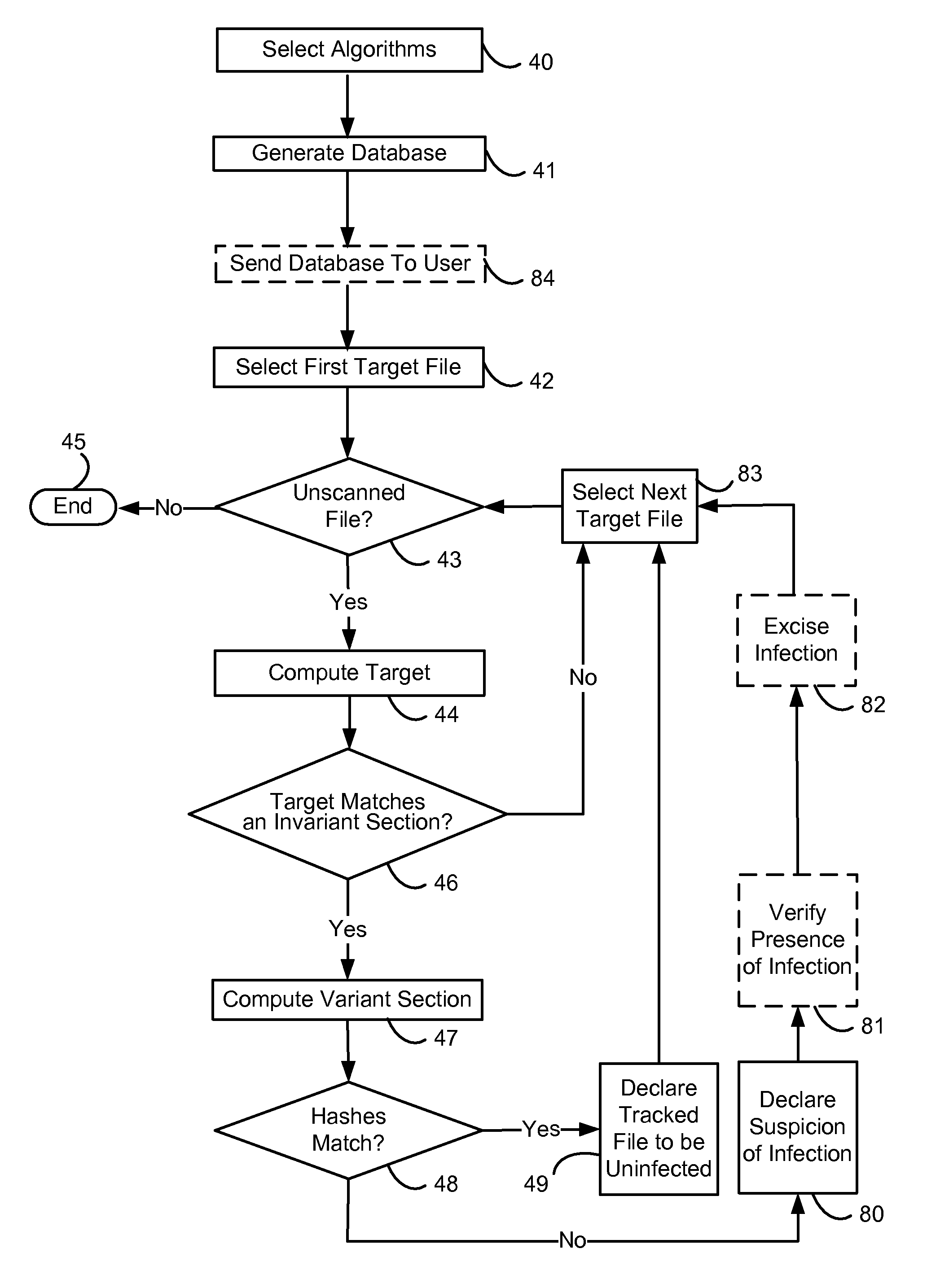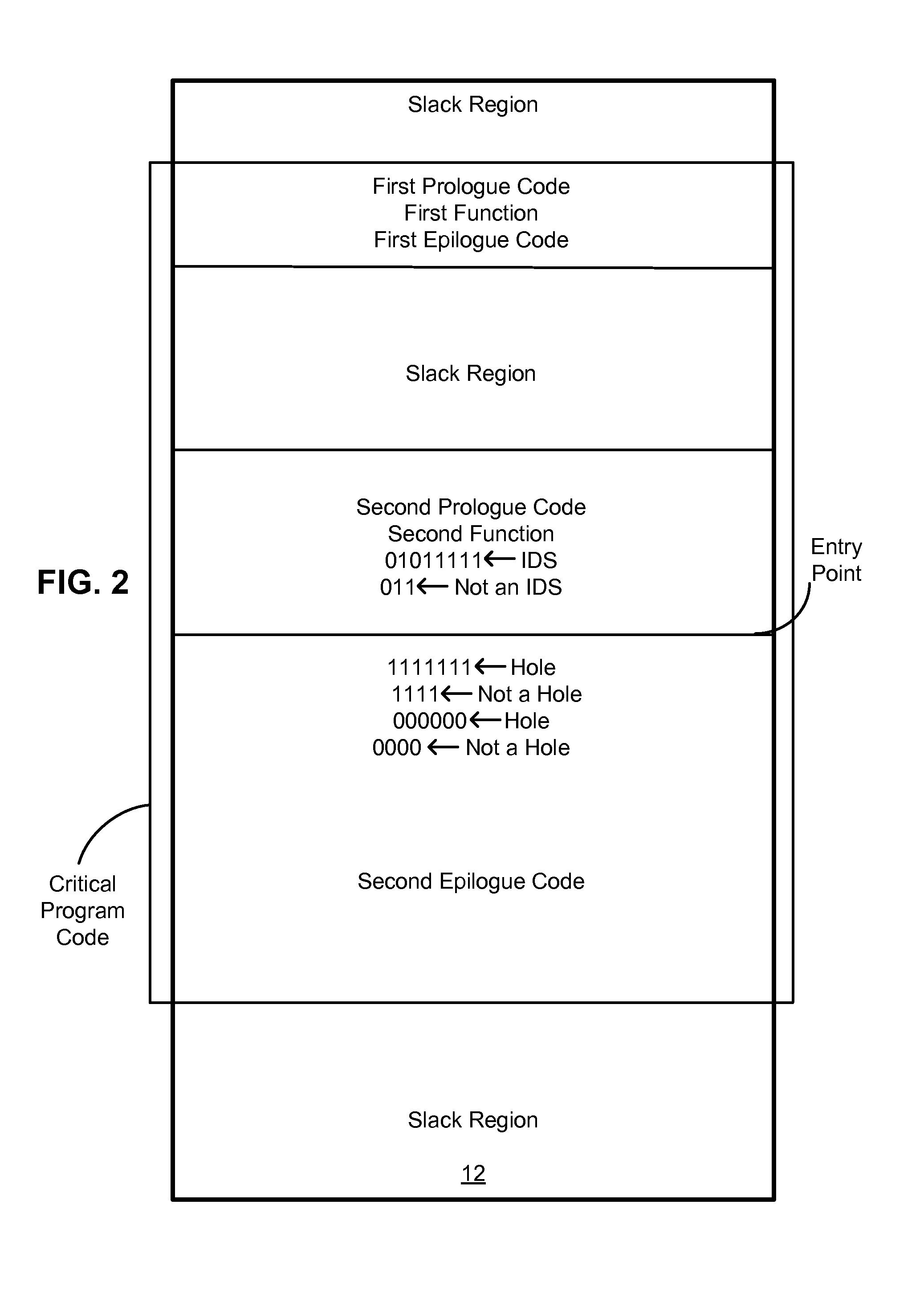Heuristic detection of computer viruses
a virus detection and computer technology, applied in the direction of digital transmission, unauthorized memory use protection, instruments, etc., can solve the problems of false positive and false negative problems of integration checkers
- Summary
- Abstract
- Description
- Claims
- Application Information
AI Technical Summary
Problems solved by technology
Method used
Image
Examples
Embodiment Construction
[0019]As used throughout this patent application, “malicious code” means any computer program, module, or piece of code that enters a computer system without an authorized user's knowledge and / or without an authorized user's consent. The term “malicious code” includes viruses, Trojan horses, and worms. The malicious code may or may not have the ability to replicate itself.
[0020]This invention has particular applicability to countering the effects of viral code, i.e., parasitic malicious code that attacks an executable (code) section of a file. Viral code usually doesn't have a data section of its own. The present invention also counters Trojanizations, i.e., malicious modifications of executable code with the intent of changing the purpose of the code for malicious reasons. As used throughout this patent application including claims, “virus” includes “viral code” and “Trojanizations” as defined above.
[0021]FIG. 1 illustrates a file (module) 10 which the virus may infect. For purpose...
PUM
 Login to View More
Login to View More Abstract
Description
Claims
Application Information
 Login to View More
Login to View More - R&D
- Intellectual Property
- Life Sciences
- Materials
- Tech Scout
- Unparalleled Data Quality
- Higher Quality Content
- 60% Fewer Hallucinations
Browse by: Latest US Patents, China's latest patents, Technical Efficacy Thesaurus, Application Domain, Technology Topic, Popular Technical Reports.
© 2025 PatSnap. All rights reserved.Legal|Privacy policy|Modern Slavery Act Transparency Statement|Sitemap|About US| Contact US: help@patsnap.com



